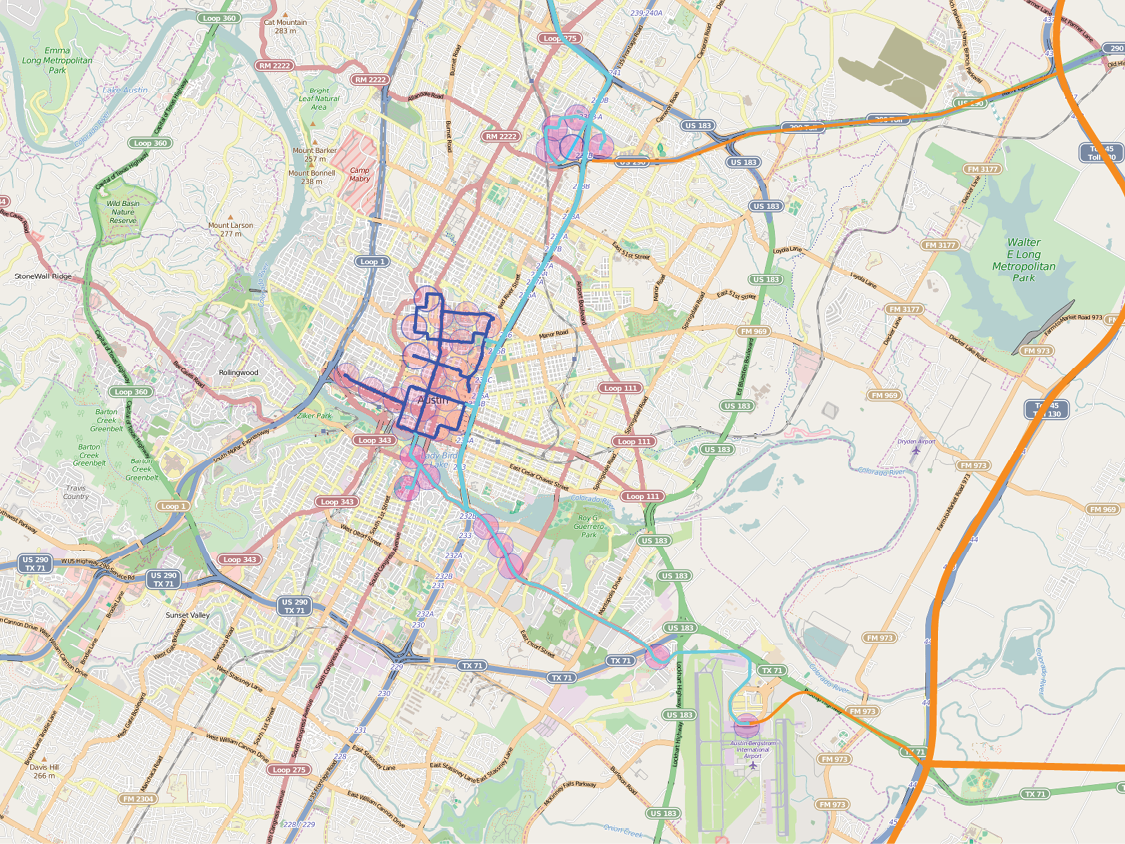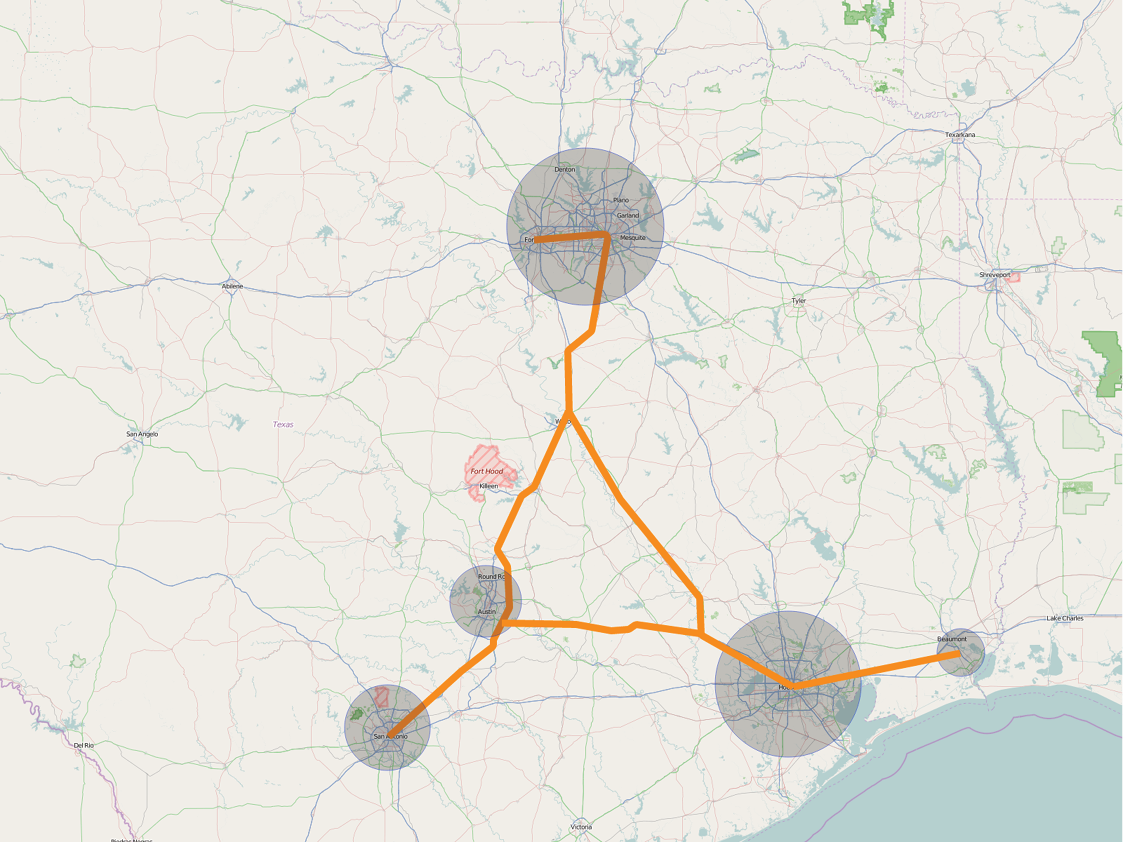Proposed System Plan for Austin
Since there is already a plan for LRT in Austin, one option is to start with a spine along the same general route. The system would connect Austin-Bergstrom International Airport, downtown Austin, University Of Texas and Acc Highland. Lofty Taxi would deliver better service because of non-stop, direct to destination travel at around half the capital cost and with reduced operating cost.
A better option will be to expand, as PRT can, and cover more of the Downtown and more of UT Austin and also connect the J. J. Pickle Research Campus. The system is comprised of 21 near-by off-line stations, 11 miles of dual-direction guideway, u-turns at ends, turning circles where needed with roundabouts at intersections. The stadium area will have a special, manned, inexpensive, large station used when large events are scheduled. This station will have a capacity of around 16,0001 seats per hour for two directions.
* The pink discs represent a 330 yard radius from a station (about 3 1/2 min. walk). One quarter mile (440 yards) is a 5 minute walk at a nominal 3 mph pace. See website for details on each station area.
1 Based on J. E. Anderson: ”The Maximum Throughput of a Multi-Berth Series-Loading Off-Line Station in a Personal Rapid Transit System”
Interactive map of Austin coverage using a Lofty Taxi system - an example
Possible Extensions
For traffic relief1 and greater GHG reduction, higher-speed LoftyTaxi will start at East River Drive and extend to the UT Austin adding another 16,000 seat per hour station there, then continue to Highland ACC Campus (3.1 miles of guideway and 5 stations) along i-35 (7.5 miles). Later it can continue along us183 (18.6 miles).
I-35 is already over capacity causing daily delays up to 32 minutes and average peak hour speeds as low as 20 mph2. Adding a PRT line is like adding a 6 lane highway3 but at 85 mph.
At the south, an extension to the Austin–Bergstrom International Airport (15 km and 8 stations) will allow quick access to the airport without parking worries. It will also open up cargo possibilities for the city moving goods around quietly and cleanly and use excess nighttime capacity. It will also connect to high-speed PRT sections described next.
1 Yearly Delay per Auto Commuter in Austin: 52 hrs http://d2dtl5nnlpfr0r.cloudfront.net/tti.tamu.edu/documents/ums/congestion-data/national/national-table1.pdf
3 6,500 vph/lane at 85 mph; 8,000 vph/lane at 70 mph

Blue lines are Austin city, cyan lines are extension and dark orange are High-Speed intercity
Leaflet | © OpenStreetMap contributors
Future High-Speed PRT possibilities
- PRT along proposed HSR routes will cost half as much and deliver better service with off-line stations and more destinations in cities. Any PRT station is a High-Speed intercity station.
- “Stretch” versions of PRT pods nominally 16’ long will be fully equipped in a similar way personal jets are furnished. This is possible because Lofty Taxi is designed for tandem operation which means either two podcars can virtually couple to increase capacity or double-length stretch versions can be accommodated.
- Cargo can be moved in aircraft ULD or on skids. All lengths of common ULD 64” tall and 60.4” wide are accommodated, e.g. LD1/AKC, LD3/AKE, LD11/ALP
- Combined with airports/LH2 spaceports1, PRT will connect all PRT enabled megaregions with minimal emissions.
- High-Speed PRT will be powered using batteries or hydrogen.
1 Application of Liquid Hydrogen as Aviation Fuel: http://www.icao.int/Meetings/EnvironmentalWorkshops/Documents/2014-GreenTechnology/6_Kojima_JAXA.pdf

Texas Triangle 665 miles of dual-direction guideway.
Leaflet | © OpenStreetMap contributors
Richard Garriott and Ben Barnes have expressed interest in building a PRT system in Austin:
“Mayor Steve Adler was among those quoted, saying Austin needs to think out of the box on traffic solutions, and Richard Garriott’s PRT idea should at least be considered.”
Contact:
François Allard – Inventor, B.Sc. (Hons)